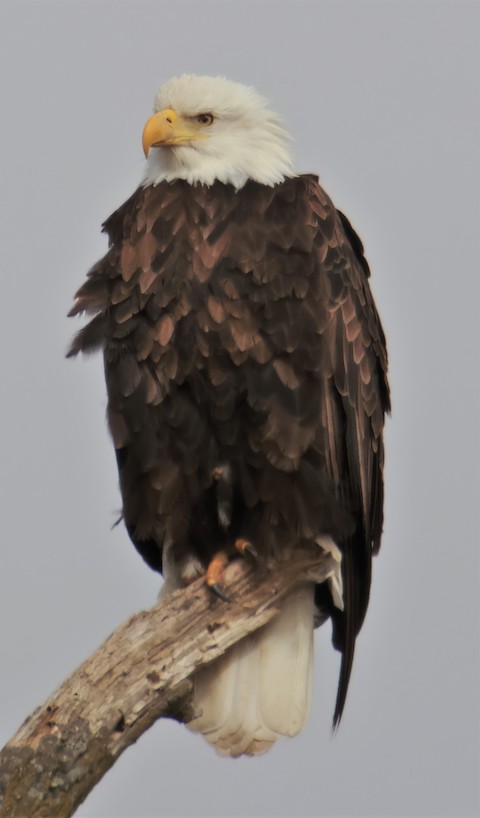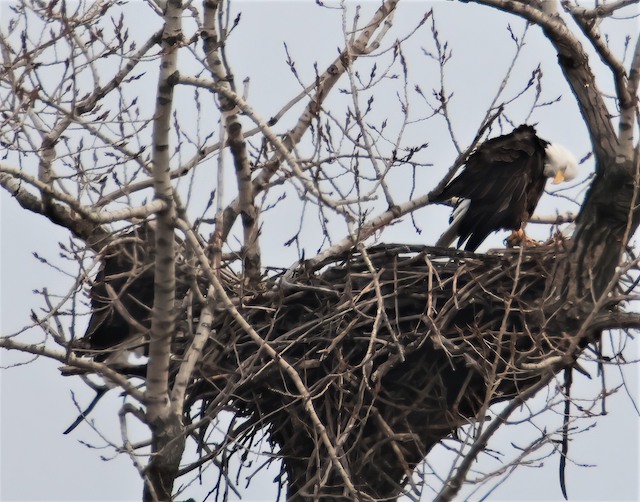It’s the first day of meteorological spring (March 1) as I write my column for this month’s Reflections on the Fox blog. Spring is an exciting season of “comebacks” in our Fox River Valley. As of this writing, great flocks of Sandhill Cranes have been seen flying overhead as they come back from their winter vacation in the sunny south. Flocks of American White Pelicans have been spotted on the river near the Fox Chain O’Lakes, having made their return from the Gulf Coast. Smaller migratory songbirds like the Red-winged Blackbird and American Robin have been spotted in the area, making their return from warmer climes too. I could have written about any one of these bird species and it would have been a timely article for the March edition. However, I’ve chosen to write about a different kind of comeback that has blessed our area: the return of the Bald Eagle as a breeding resident in our wonderful Fox River Valley.
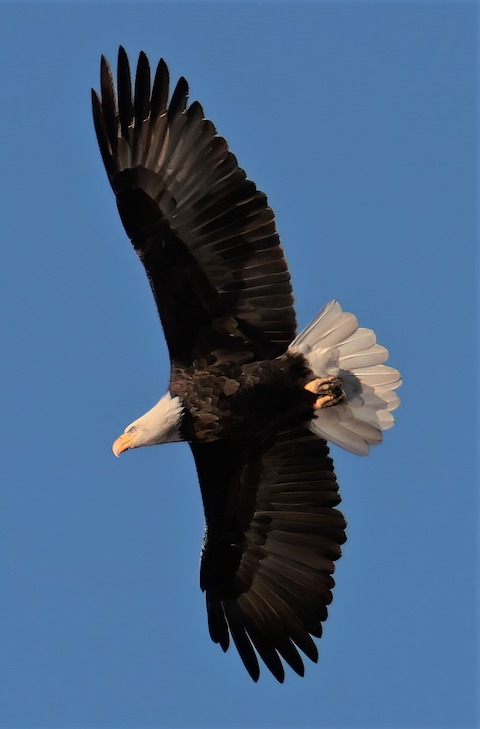
When I was a teenager a long time ago, the sight of a Bald Eagle flying over the Fox River was almost unbelievable to contemplate. I spent a great deal of my time fishing on the river from the mid-1970s onward and can’t remember seeing any eagles along the river back then. Now, when I hike, drive, or fish along the river, seeing one or more Bald Eagles flying over our Fox River is a routine but nevertheless spectacular sight! The rebound that these magnificent raptors have made, not only in our area, but all over the United States is an amazing conservation success story. It’s a story that not coincidentally parallels the story of the Fox River’s rebound from a savagely abused stream, a place used as an open sewer through the 1960s, to the clean and beautiful river we enjoy today.
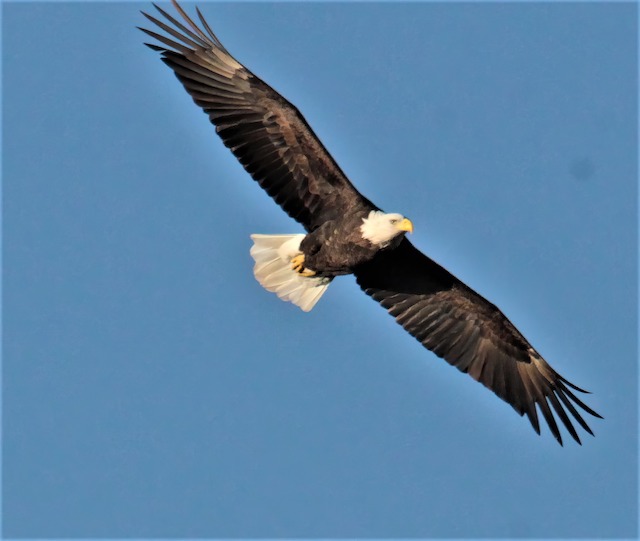
Hoover Forest Preserve, Yorkville, Illinois, January, 2023.
Back in the 1960s, the Bald Eagle was faced with the very real possibility of extinction. Major factors that led to the Bald Eagle being placed on the federally endangered species list in 1967 included the widespread use of DDT as a pesticide, which caused the eagle’s eggshell to thin to the point of cracking during incubation, and poor water quality in the rivers and lakes. The eagles lived along these waterways where pesticide use reduced fish populations, making it difficult for the eagles to find sufficient food sources. In an August 3, 2021 interview on Illinois Public Radio (WILL), Dr. Michael Ward, Associate Professor of Wildlife Ecology in the Department of Natural Resources and Environmental Sciences, and Senior Ornithologist at the Illinois Natural History Survey at the University of Illinois in Urbana-Champaign, spoke about the comeback of the Bald Eagles overall and specifically in the state of Illinois. Dr. Ward said the low number of Bald Eagles in Illinois could be attributed to the effects of DDT and polluted rivers and streams. At the lowest point, Illinois only had three active eagle nests! Currently there are over 200 known Bald Eagle nests in the state.
Dr. Ward credited the Bald Eagle’s recovery from being endangered to its much more stable current status ( the bird was removed from the federally endangered species list in 2007) to the discontinuance of the use of DDT as a pesticide, the adoption of the Clean Water Act which resulted in healthier, less polluted waterways, and changes in the eagle’s feeding behavior. Dr. Ward said that over time, Bald Eagles adapted to include carrion in their diet as well as their primary source of nutrition: fish. Dr. Ward specifically cited improvements in the water quality and ecology of the large rivers in Illinois like the Mississippi, the Illinois, and the Rock rivers as major contributors to the Bald Eagle’s comeback. Anecdotally, we know that major strides in water quality improvement have been made on the Fox River over the same time period. Habitat quality and fish population distribution probably peaked around 1986 in the Fox River and have been sustained at a high level ever since. It’s probably not a coincidence that Bald Eagle populations along the river have also increased over the period from the mid-1960s to the present.

Illinois now has the highest wintering population of Bald Eagles of any state in the United States outside of Alaska. In addition, we have an increasing population of breeding eagles that stay in Illinois and the Fox River Valley year round. I personally know of four active Bald Eagle nests within a fifteen-minute drive of my home in Sugar Grove Township. I’m quite sure there are others that I’m not aware of in the immediate area!
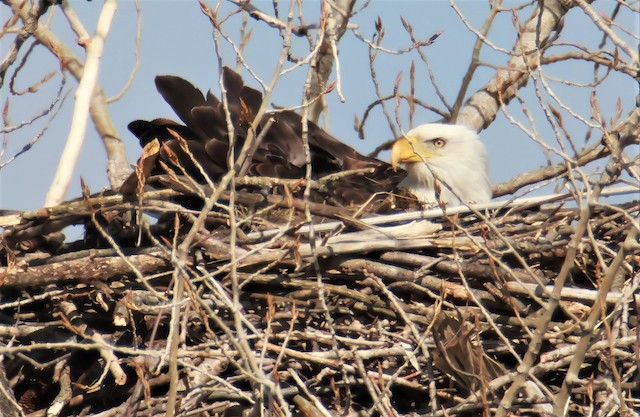
Equally encouraging for the long-term sustainability of the Bald Eagle population in the Fox Valley, many subadult Bald Eagles also live along the river and can be regularly seen. Bald Eagles don’t attain their characteristic chocolate-brown body feathers with snow-white head and tail feathers until they reach five years of age. Juvenile eagles have more mottled brown, white, and gray feathers.

Hoover Forest Preserve in Yorkville, Illinois, February 2023.

Fox River in the Hoover Forest Preserve, Yorkville, Illinois. February 2023.
While winter is a good time to view eagles in the Fox Valley, the resident birds can be seen at any time of the year. Next time you’re along the river and see a Bald Eagle perched on a tree or flying over the water, think about how lucky we are to have these beautiful birds utilizing our wonderful Fox River as their home territory. It wasn’t all that long ago that both the eagles and the river were under dire threat. The actions of people like Jim Phillips (aka The Fox) and other conservation groups throughout the country have helped to bring rivers like our Fox River and birds like the Bald Eagle back from oblivion.

Until next month, Keep on Fixin’ the Fox and enjoying all the natural beauty that the Fox River Valley provides!
